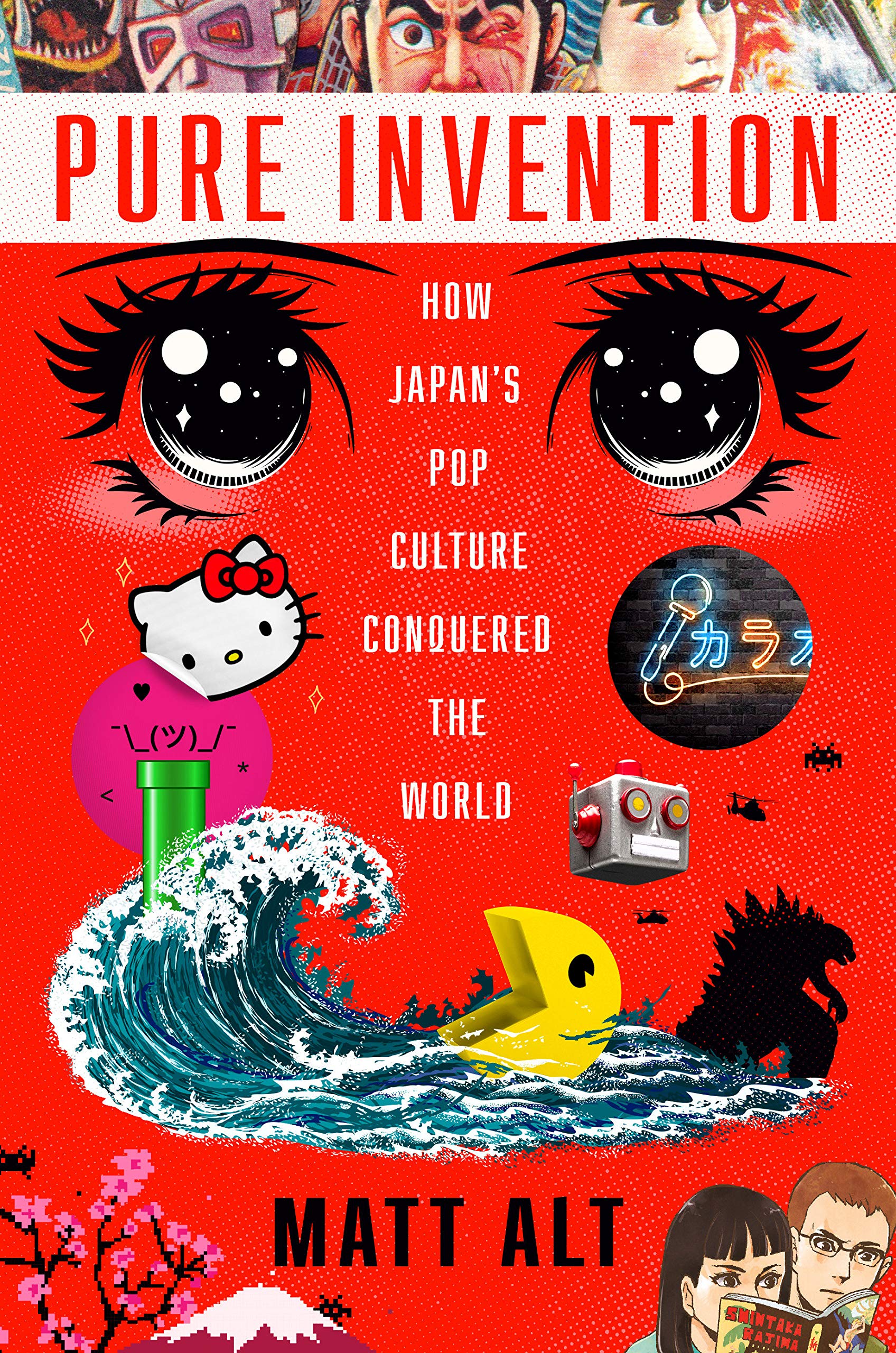Pure Invention: A Must-Read Title for Understanding Japanese Popular Culture
This article originally appeared in the January 2023 issue of CONNECT.
Veronica Nielsen (Hiroshima)
What was the first anime you watched or video game you played as a kid? Many of us had earlier exposure to Japanese popular culture than we may realize. My older brother and I shared our love for the Pokémon franchise, which would forever change how Japanese popular culture demonstrated its heavy influence in the United States and other Western countries. Others may mention additional popular anime titles like Dragon Ball Z, Fullmetal Alchemist, and Naruto, to name a few.
But what makes all of these series so influential to the development and pervasiveness of Japanese popular culture? What cultural, economic, and historical factors contributed to the rise and fall of various entertainment franchises in and outside Japan? While these are difficult questions to answer, Matt Alt, an author residing in Tokyo, attempts to tackle these by exploring overlooked parts of Japanese history that inspired the trends we can observe in Japanese popular culture.
Published by Penguin Random House in 2020, Matt Alt’s Pure Invention: How Japan Invented the Modern World explores some lesser-known aspects of Japanese culture that are essential for understanding how Japanese popular culture developed into what we can see today. Although some non-academic books cover Japanese popular culture for a Western audience, Matt Alt takes a different approach in discussing this topic that is neither academic nor monotonous. It is an easygoing yet educational and valuable resource that is jam-packed with exciting details about Japanese culture and history, all of which will captivate readers from page one and leave them wanting more.
As its title suggests, Pure Invention examines some pivotal creations produced in Japan by innovative entrepreneurs that many, including their creators, did not expect would spark much demand and satisfaction among Japanese consumers. For example, Hello Kitty attracted immense success among young Japanese women for being an easy-to-identify character that heavily inspired and defined what makes something kawaii, or cute. With a face that is simple in design and a mysterious background that would over time shock many fans, Hello Kitty garnished attention and love from Japanese consumers which would inspire Sanrio to introduce the charming character overseas for others to also enjoy. With Sanrio stores inside and outside Japan, Pure Invention describes Hello Kitty’s journey from her original development to the present to demonstrate the influential power Hello Kitty has had and continues to have over Japanese popular culture today.
With Pure Invention, readers can also learn more about recent controversies involving influences from Japanese popular culture, like Gamergate, which occurred in the 2010s. Although there is still controversy regarding who initially inspired the breakout of Gamergate, Matt Alt leaves an impactful message in the mind of readers to warn that cancel culture impedes having civilized discussions about what direction video games should take with their messages.
Even though I enjoyed his thorough coverage of more obscure parts of Japanese popular culture and history in this book, I wished I could read more about his analysis of recent trends within Japanese entertainment. For instance, Alt briefly refers to the immense popularity that Makoto Shinkai’s 2016 anime film Your Name experienced. However, the short section dedicated to this movie does not quite do the film justice when persuading readers of why this anime was so impactful among teenagers and adults in and outside Japan. While I understand his reasons for dedicating more attention and research to events like the rise of manga artist Osamu Tezuka or Hello Kitty’s popularity boom, Matt Alt’s latest title could have attracted more readers had he written more about series and titles that more readers may have heard of before.
While Japanese popular culture is a broad topic that is difficult to explore in-depth with one book, Matt Alt successfully demonstrates his credibility in discussing this theme with Pure Invention. By introducing his readers to more obscure parts of post-World War II Japanese history, he explains what events and trends led to Japanese popular culture’s current status in the entertainment realm.
After reading Pure Invention, I strongly recommend readers listen to the Japan Station podcast episode 44, which features Matt Alt. Even though he does not discuss every element in his book, the author mentions some additional trivia about Japanese popular culture that is sure to fascinate those who are excited to learn about this topic. His exposure to Japanese popular culture and gaining inspiration to study Japanese may inspire others to learn more about this complex but intriguing language.
Matt Alt has also written extensively about other fascinating aspects of Japanese culture, such as ninja, yokai, and yurei. Given his excellent research and writing in his latest work, I look forward to reading his future titles and following his activity to learn more about the increasingly prevalent topic of Japanese popular culture.
Veronica Nielsen is a first-year Coordinator for International Relations (CIR) living in Hiroshima Prefecture. She enjoys reading, writing, drawing, playing video games, and traveling around Japan. She hopes to go on a road trip this year to explore prefectures in Shikoku and Kyushu, where she has not visited yet.




